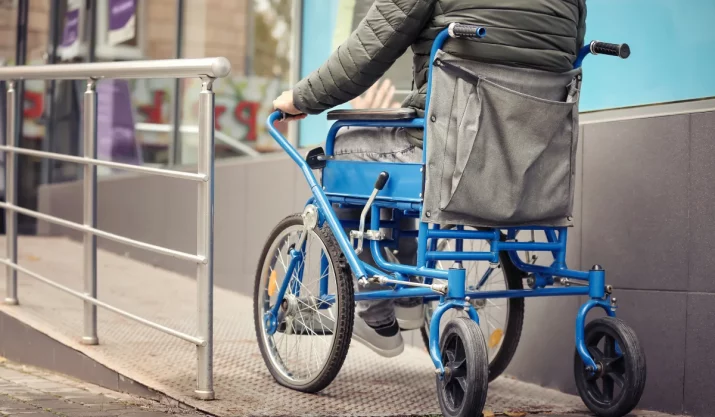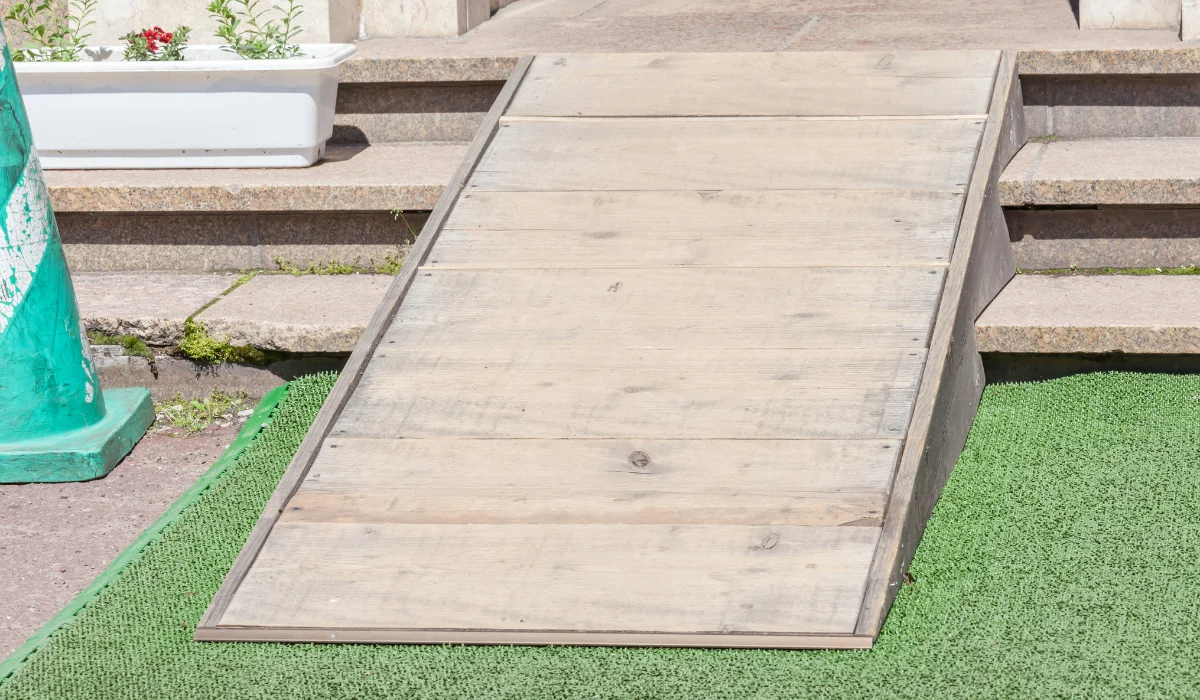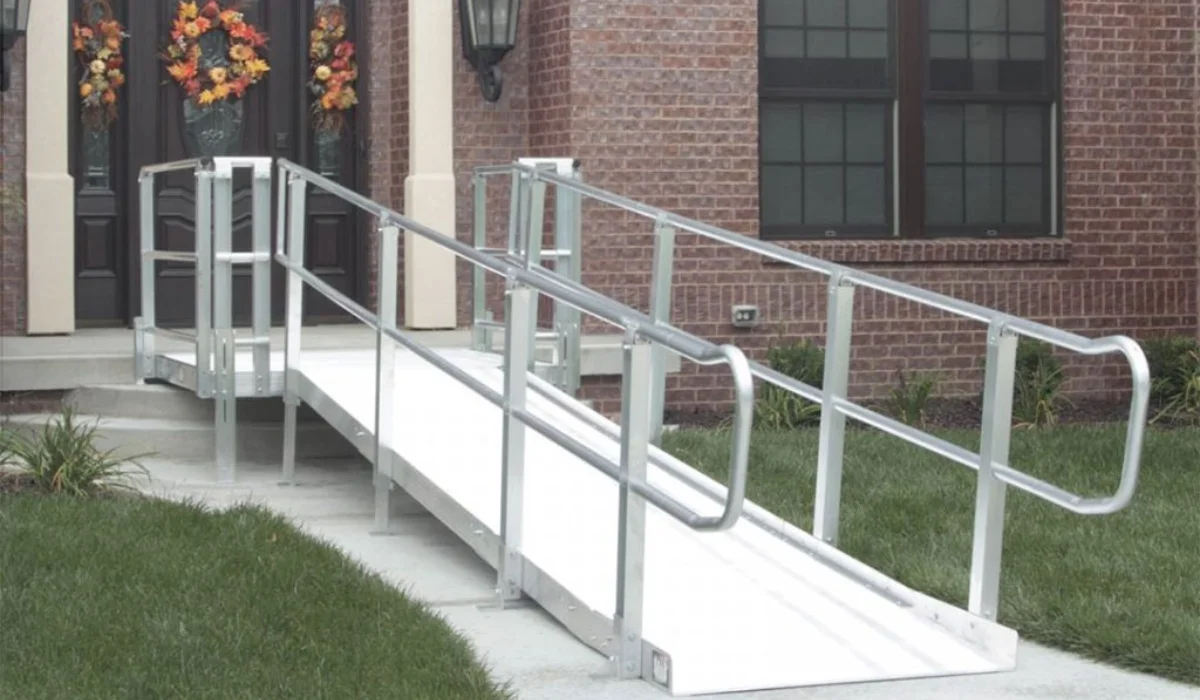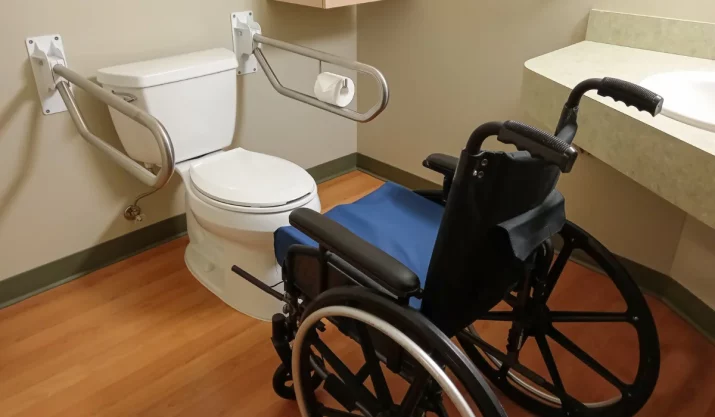The Real Cost of Installing a Wheelchair Ramp in California

Table of Contents
If you or someone you care for uses a wheelchair, scooter, or walker, you know how important it is to have safe, easy access at home.
For many California homeowners, that means adding a wheelchair ramp. But when you start looking into prices, things can get confusing fast. What you see online doesn’t always reflect the actual costs of ramp installation.
This article breaks it all down for you, so you’ll know what to expect and how to plan for the real cost of a wheelchair ramp installation.
Key Takeaways
- Most wheelchair ramps in California cost between $1,200 and $10,000, depending on materials, layout, and regional labor costs.
- Factors such as ramp type, length, incline, and entryway design have a big impact on total installation costs.
- Portable ramps or ramp rentals are good for short-term use, while permanent ramps offer better long-term accessibility.
- Medicaid or local programs may offer financial help when ramps are needed for safety, mobility, or medical access.
What California Homeowners Should Know About Wheelchair Ramp Costs
In most cases, a wheelchair ramp in California costs between $1,200 and $10,000. That depends on many things. For example, a basic wooden ramp in a flat yard will cost much less than a custom-built ramp on a steep hill in San Francisco.
A good estimate is $100 to $250 per linear foot, which usually includes materials and labor. If your ramp needs handrails, curbs, or a large platform to turn on, your total cost will go up.
If you only need the ramp for a few weeks or months, ramp rentals or portable ramps can be a more cost-effective choice. But for most people planning for long-term home accessibility, a permanent ramp is the better option.
Key Factors That Affect Wheelchair Ramp Installation Costs
Every ramp is different, and several things affect the wheelchair ramp cost, especially in California.
Type of Ramp
There are many kinds of ramps:
- Wood Ramps: Often the cheapest to build, but they need more maintenance, especially in places with rain or ocean air.
- Aluminum Wheelchair Ramps: Lightweight material that doesn’t rust, which makes them great for the coast.
- Modular Ramps: Come in pieces that fit together and can be moved or changed later.
These ramp materials are helpful for people who may move or need to change their layout over time. You might also consider a threshold ramp to help with small steps at doorways.
Ramp Length and Incline
To meet ADA guidelines, your ramp must follow the 1-to-12 rule: 1 inch of rise for every 12 inches of ramp. This means if your porch is 24 inches high, you need a 24-foot ramp.
The longer the ramp, the more expensive it will be.
You may also need landings or turns, especially if your space is tight.
Entryways and Yard Layout
Your entryways and yard shape will also affect the project.
- If your home is on a slope or has landscaping in the way, your installation costs will go up.
- If the ramp needs to go around corners, avoid curbs, or clear steps, the work becomes more complex.
Professional Installation and Labor Costs
You can try a DIY approach with a small portable ramp or threshold ramp, but most permanent ramps should be installed by a professional installer. This ensures the ramp is strong, safe, and ADA compliant. It also saves you the trouble of getting permits or dealing with city inspectors.
In California, labor costs can be high, especially in areas like Los Angeles or San Diego. But you’re also paying for peace of mind and a job done right.
ADA Compliance
If your ramp is for a rental unit or a business, you’ll need to meet ADA standards. That means adding handrails, meeting slope rules, and including curbs or edge protection.
These rules aren’t optional for public spaces, and they’re a good idea for private homes, too. Even for personal use, an ADA-compliant ramp helps wheelchair users, walkers, and caregivers move safely and easily.
Insurance and Financial Help
Unfortunately, Medicare usually doesn’t pay for home modifications like ramps. Medicaid may help in some cases, depending on your program. Some local or state programs in California help people with low income, disabilities, or veterans.
You can also check with your doctor to see if your ramp qualifies as medical equipment needed for safety.
What Does It Look Like in Real Life?
Let’s say you live in Sacramento and need a 20-foot wood ramp for your dad’s scooter.
With basic handrails and a non-slip surface, you could pay around $3,500 to $4,500. That includes materials, labor, and maybe some minor landscaping.
Now, imagine you live in a hillside home in San Diego.
You choose a modular ramp made from aluminum that turns around a corner. It includes curbs, a wide landing, and anti-slip coating. That job could cost closer to $9,000 or more.
On a tight budget for a full handicap ramp?
A threshold ramp or portable ramp might be enough if you just need help getting through the front door. And if you only need it for a few months, ramp rentals can save you thousands.
Need Help Choosing the Right Ramp?
Getting a wheelchair ramp is more than a home upgrade. It’s a way to give your loved ones freedom and safety. Whether you’re helping a parent return home from rehab or making your house easier to use every day, the right ramp can make a big difference.
At California Mobility, we help homeowners across the state find the right solution, whether it’s a semi-permanent modular ramp, a basic wood ramp, or a full concrete ramp that blends into your home. Every ramp comes with a warranty, and we make sure everything follows ADA guidelines.
If you’re ready to talk about options or just want a second opinion, contact us for a free estimate. We’ll explain your choices clearly and help you build a ramp that fits your space, your needs, and your budget.









